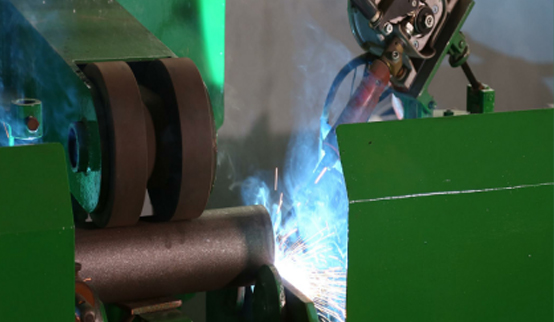 Afrikaans
Afrikaans  Albanian
Albanian  Amharic
Amharic  Arabic
Arabic  Armenian
Armenian  Azerbaijani
Azerbaijani  Basque
Basque  Belarusian
Belarusian  Bengali
Bengali  Bosnian
Bosnian  Bulgarian
Bulgarian  Catalan
Catalan  Cebuano
Cebuano  Corsican
Corsican  Croatian
Croatian  Czech
Czech  Danish
Danish  Dutch
Dutch  English
English  Esperanto
Esperanto  Estonian
Estonian  Finnish
Finnish  French
French  Frisian
Frisian  Galician
Galician  Georgian
Georgian  German
German  Greek
Greek  Gujarati
Gujarati  Haitian Creole
Haitian Creole  hausa
hausa  hawaiian
hawaiian  Hebrew
Hebrew  Hindi
Hindi  Miao
Miao  Hungarian
Hungarian  Icelandic
Icelandic  igbo
igbo  Indonesian
Indonesian  irish
irish  Italian
Italian  Japanese
Japanese  Javanese
Javanese  Kannada
Kannada  kazakh
kazakh  Khmer
Khmer  Rwandese
Rwandese  Korean
Korean  Kurdish
Kurdish  Kyrgyz
Kyrgyz  Lao
Lao  Latin
Latin  Latvian
Latvian  Lithuanian
Lithuanian  Luxembourgish
Luxembourgish  Macedonian
Macedonian  Malgashi
Malgashi  Malay
Malay  Malayalam
Malayalam  Maltese
Maltese  Maori
Maori  Marathi
Marathi  Mongolian
Mongolian  Myanmar
Myanmar  Nepali
Nepali  Norwegian
Norwegian  Norwegian
Norwegian  Occitan
Occitan  Pashto
Pashto  Persian
Persian  Polish
Polish  Portuguese
Portuguese  Punjabi
Punjabi  Romanian
Romanian  Russian
Russian  Samoan
Samoan  Scottish Gaelic
Scottish Gaelic  Serbian
Serbian  Sesotho
Sesotho  Shona
Shona  Sindhi
Sindhi  Sinhala
Sinhala  Slovak
Slovak  Slovenian
Slovenian  Somali
Somali  Spanish
Spanish  Sundanese
Sundanese  Swahili
Swahili  Swedish
Swedish  Tagalog
Tagalog  Tajik
Tajik  Tamil
Tamil  Tatar
Tatar  Telugu
Telugu  Thai
Thai  Turkish
Turkish  Turkmen
Turkmen  Ukrainian
Ukrainian  Urdu
Urdu  Uighur
Uighur  Uzbek
Uzbek  Vietnamese
Vietnamese  Welsh
Welsh  Bantu
Bantu  Yiddish
Yiddish  Yoruba
Yoruba  Zulu
Zulu Understanding Conveyor Components for Efficient Material Handling Systems
Understanding Conveyor Components Key to Efficient Material Handling
Conveyor systems are integral to many industries, facilitating the movement of materials quickly and efficiently. To ensure these systems operate optimally, it is essential to understand the various conveyor components that work in unison to create a seamless workflow. Whether in manufacturing, warehouses, or airports, the performance of a conveyor system largely depends on its components, each playing a specific role.
1. Conveyor Belts
At the heart of any conveyor system lies the conveyor belt, which is designed to transport materials from one point to another. These belts are made from various materials, including rubber, fabric, and plastic, tailored to suit different applications. For instance, heavy-duty rubber belts are ideal for transporting large, abrasive items, while lightweight fabric belts are used for handling smaller products. The choice of belt material and design is crucial in determining the speed, load capacity, and durability of the conveyor system.
Rollers and idlers are critical components that support the conveyor belt and reduce friction. Rollers are the cylindrical elements that the belt runs over, while idlers are the rollers that keep the belt aligned and provide tension. The material and design of these components affect the overall efficiency of the conveyor system. For example, using high-quality bearings within the rollers minimizes wear and energy consumption, allowing for smoother operation.
3. Drives and Motors
The drive system is responsible for moving the conveyor belt, and it typically includes a motor, a gearbox, and pulleys. The motor, which can be electric, hydraulic, or pneumatic, provides the necessary power to drive the conveyor. Selecting the right motor size and type is essential to ensure that the conveyor can handle its maximum load without stalling. Gearboxes help control the speed of the belt, allowing for adjustments based on the material being moved. Proper maintenance of these components is vital to prevent downtime and ensure efficient operation.
conveyor component

4. Pulleys
Pulleys play a significant role in the functionality of a conveyor system, acting as the main anchor points around which the conveyor belt moves. They come in two main types drive pulleys, which are connected to the motor, and tail pulleys, which support the other end of the conveyor. Pulleys are often coated with materials that enhance grip and minimize slipping. Selecting the appropriate size and type of pulleys is critical for maintaining belt tension and ensuring smooth operation.
5. Safety Devices
Safety is paramount in any material handling system. Conveyor components are equipped with various safety devices, such as emergency stop buttons, belt misalignment detectors, and overload protection systems. These devices help prevent accidents and equipment damage by providing operators with the tools they need to react quickly to any irregularities or hazards.
6. Control Systems
Modern conveyor systems often integrate advanced control systems that allow for automation and increased flexibility. These systems can include sensors, programmable logic controllers (PLCs), and user interfaces that enable operators to monitor and control the conveyor’s operation remotely. Automation can improve efficiency by optimizing speed and throughput, responding to real-time changes in material flow.
In conclusion, understanding the various components of conveyor systems is essential for anyone involved in material handling and logistics. From conveyor belts to control systems, each component plays a crucial role in ensuring the efficiency and safety of operations. By selecting the right components and maintaining them properly, businesses can improve productivity, reduce operational costs, and enhance the overall effectiveness of their material handling processes. In a world where efficiency is key, a well-designed conveyor system is an invaluable asset.
-
Revolutionizing Conveyor Reliability with Advanced Rubber Lagging PulleysNewsJul.22,2025
-
Powering Precision and Durability with Expert Manufacturers of Conveyor ComponentsNewsJul.22,2025
-
Optimizing Conveyor Systems with Advanced Conveyor AccessoriesNewsJul.22,2025
-
Maximize Conveyor Efficiency with Quality Conveyor Idler PulleysNewsJul.22,2025
-
Future-Proof Your Conveyor System with High-Performance Polyurethane RollerNewsJul.22,2025
-
Driving Efficiency Forward with Quality Idlers and RollersNewsJul.22,2025





























